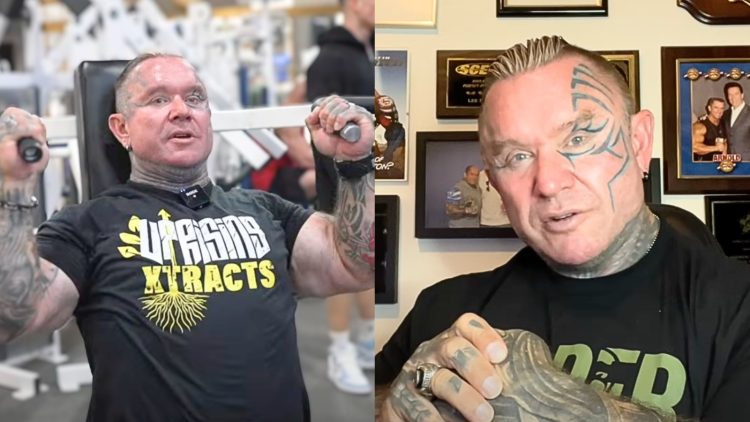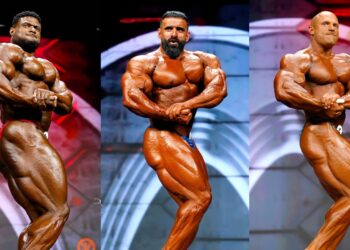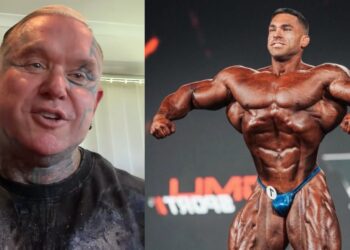Bodybuilding veteran Lee Priest is back to offer some clutch workout advice. In a recent YouTube video, Priest walked fans through why they don’t need to perform partial reps.
During his respective bodybuilding tenure, Lee Priest never let genetics get in his way while becoming a top-tier Men’s Open Pro. Even though he didn’t boast a tall stature, he made up for it with compact muscle volume and dry conditioning. At one point, Priest even managed to defeat the mighty eight-time Mr. Olympia king Ronnie Coleman.
Partial reps have plenty of utility in the fitness and bodybuilding scene. Since weightlifting took off, practitioners have modified their range of motion to accommodate muscle-building efforts. However, Lee Priest believes partial reps aren’t necessary and are often used during ego lifting.
Lee Priest Explains Why Partial Reps Aren’t Needed In Workout Routines
According to Lee Priest, while partial reps have their merit, he believes people make the mistake of performing them with excessive weight, which could lead to injury and improper form.
Level Up Your Fitness: Join our 💪 strong community in Fitness Volt Newsletter. Get daily inspiration, expert-backed workouts, nutrition tips, the latest in strength sports, and the support you need to reach your goals. Subscribe for free!
“Partial reps are fine if you’re doing them because a lot of people do them sometimes to add strength like if you aren’t used to a weight you might just say, if you’re bench pressing 300, I know people that might go 350 but only lift it off, get a spot, and then they come halfway down.”
He believes partial reps while squatting are ideal for building up strength but warns against the practice for those who ego lift.
“It’s more just like getting the feel of it. Some people do it squatting, now that’s good if you’re trying to build up strength. Next time you get to a heavier weight it’s a lot easier or you’re just more confident in your mind that you can handle the weight on your back.”
“Now, it’s not good if you’re just doing partials for ego-lifting. I see a lot of that and that’s where people make the mistake where they try to go too heavy on leg press you see it, on squatting you see it, on benching you see it, as long as you can get as close to the exercise as possible and as long as you feel it then that’s good.”
Priest also mentioned that if something is working for a lifter inside the gym, there’s no reason to change it.
“Don’t have someone say hey you’re doing that wrong if you’re doing it the best you can if you can’t do it the way they say,” adds Priest.
Most importantly, Lee Priest says it’s vital that lifters find exercises that work for their bodies, taking into account genetic differences such as weight and height.
“You’ve got to find programs and exercises that you feel. Yes, use the basic exercise as a guide but then you do it to the best of your ability.”
“You can use things when it comes to dieting and training programs as a guide but then you’ll have to work out what’s best for you.”
This wasn’t Lee Priest’s first time imparting workout knowledge to his fanbase. Recently, the retired Australian IFBB Pro went over the most common mistakes lifters encounter on back day. From intensity to body positioning, Priest explained how to strengthen the posterior chain safely.
If you ask bodybuilding expert Arnold Schwarzenegger about partial reps, he believes they result in similar benefits to a full range of motion, according to a study he presented.
“Scientists reviewed 23 randomized controlled trials to determine how much range of motion influences muscle growth. Full and partial range of motion similarly affected muscle size, strength, body fat, and sports performance.”
Having trained alongside legends of the sport like Tom Platz and Schwarzenegger, Priest’s insight into workouts is a treasure for the fitness and bodybuilding community. Although partial reps have their place in routines, Priest believes it’s best to avoid them and find a workout program that tailors to your individual needs.









